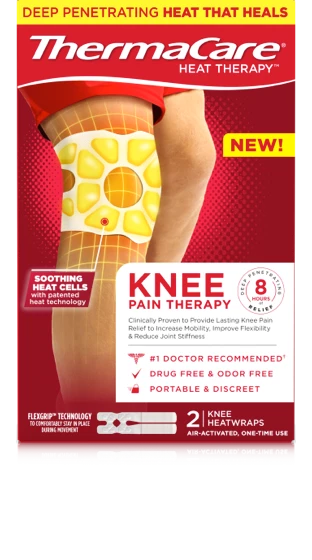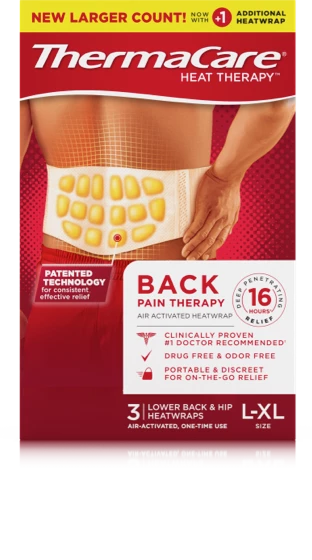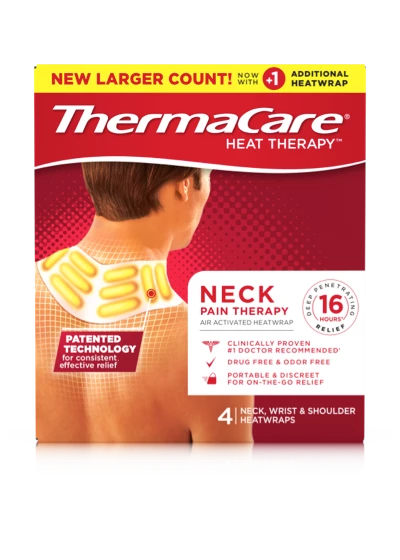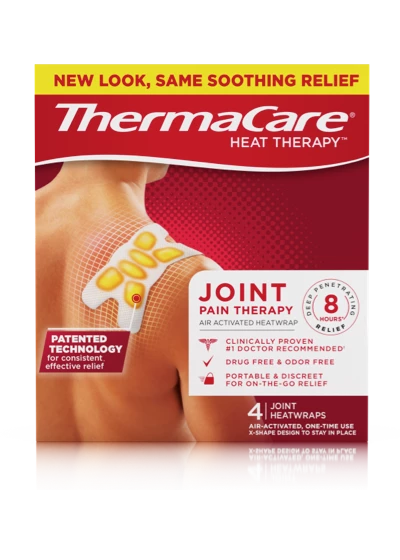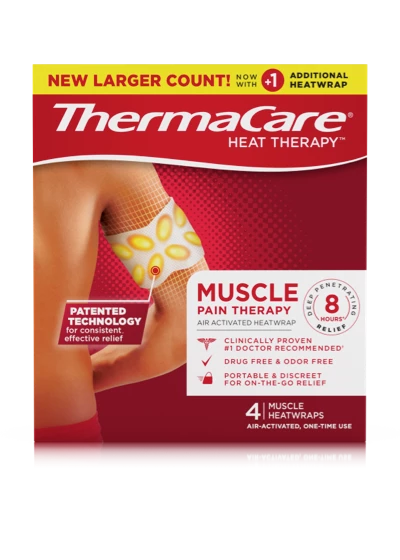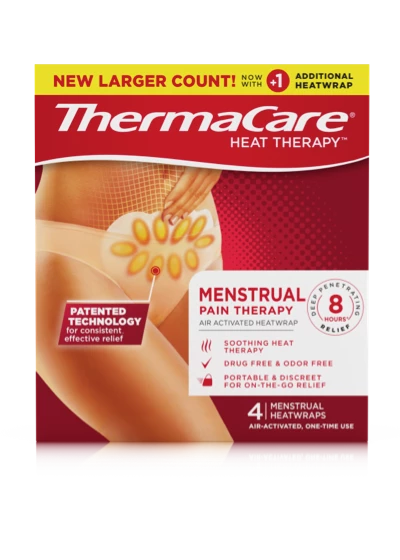- HeatWraps
-
Pain Management
Learn about the causes of aches and pains, tips for prevention, and how to treat them
- Buy Now
- About ThermaCare HeatWraps
- ThermaCare FAQs
- Pain Management
- Healthcare Professionals
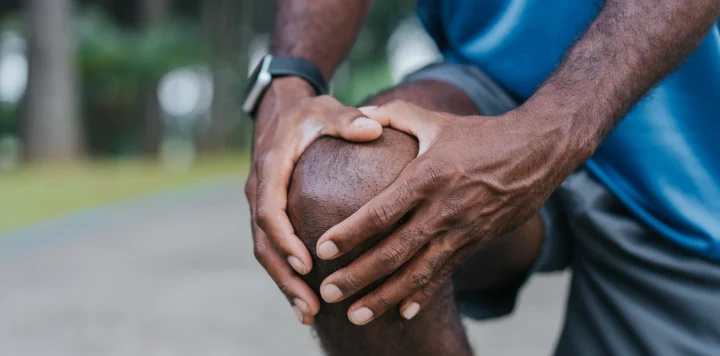
Are You Using Heat Therapy for Your Knee Pain? You Probably Should Be
Given that the knees are one of the largest and most complex joints in the body, and that almost any movement that uses your legs relies on your knees, knee pain is a life-altering issue for too many people.
Fortunately, there are ways to help knees feel and function better. Whether you’d like to improve knee stiffness or knee flexibility, or learn knee warm up exercises and knee pain relief exercises, we’ve got you covered…
Ice or Heat for Knee Pain?
Cold therapy is most helpful when you’re dealing with an acute (or new) injury and when inflammation and swelling are your main concerns. Basically, for pain that’s less than 72 hours old, cold or ice packs are recommended.*
After 72 hours, heat therapy usually is advised, instead.
How Does Heated Knee Pain Relief Work?
Heat application and heat wraps are more helpful for longer knee injury recovery or chronic, long-standing knee pain and stiffness. Heat works, according experts in the medical journal Frontiers in Rehabilitation Science, in multiple ways:
- By applying heat, you activate temperature-sensitive nerve endings that help block knee pain signals.
- The physical pressure of a heat wrap on the knee (such as a ThermaCare Knee Pain Therapy wrap) stimulates proprioceptive nerve endings to further block pain sensations.
- Heat helps to improve blood, oxygen and nutrient flow to the knees – accelerating healing and improving flexibility.
- Increasing temperature in the tissues of and around the knee reduces stiffness, improves range of motion and enhances extensibility.
- Heat wrap therapy can reduce the impact of knee pain on everyday life, especially on lifting, working and sleeping.
- Studies in people with knee osteoarthritis have shown that heat therapy significantly improved knee stiffness, functioning, and pain as well as feelings of general health and quality of life.
Heat treatment, say Harvard experts, before stretching or joint mobilization can significantly improve comfort and function.**
Knee Warm Up Exercises
Warming up and loosening up your knees (and your whole body) before exercise or work can go a long way to improving your flexibility, comfort and function.
Applying a ThermaCare Knee Pain Therapy heat wrap is one convenient way to incorporate a warm up into your morning but exercises can help, too. Plan on warming up for 5 to 10 minutes to increase blood flow to your muscles and knees, enhance flexibility and improve joint mobility. Your warm-up can include exercises like these:
- Walk or lightly jog: Get your body moving for 5 minutes to slowly increase your heart rate and warm up muscles.
- Leg Swings: Stand and hold onto a stable object for support. Swing one leg forward and backwards, then side to side, to loosen up the hips and thighs. Do about 10 leg swings per leg.
- Knee Lifts: Slowly lift your knee towards your chest, hold it with both hands for a few seconds, then lower it. Alternate legs and do 10 lifts per leg.
- Ankle Circles: You can do this sitting or standing. Lift one foot off the ground and rotate the ankle. Do 10 circles in each direction for each ankle.
- Butt Kicks: While standing or jogging in place, gently bring your heel up towards your buttocks. Alternate legs and continue for 1 to 2 minutes.
- High Knees: While standing or jogging in place, lift your knees high, aiming to get them parallel to the ground. Continue this motion for 1 to 2 minutes.
Knee Pain Relief Exercises
Keeping the muscles and other tissues around your knees strong can help improve support for your joints and ease pain. Here are a few knee pain relief-oriented exercises recommended by experts:
- Clamshells: Lie on your side with your hips stacked and knees bent. Keeping your feet together, lift the top knee up, mimicking the movement of a clamshell opening. Hold the position for a few seconds, then slowly lower your knee back down. Repeat this 15 times per side.
- Straight-leg lift: Do this exercise on the floor, not on a soft surface. Lie on your back with one leg bent at about a 90-degree angle and the other leg straight. With thigh muscles tight, raise the straight leg about a foot off the ground and hold. After a few seconds, slowly lower the leg back down. Do several repetitions with the same leg before switching to the other side.
- Sit/stands: Use a sturdy chair for this exercise. Sit slightly forward in a chair with your feet about shoulder-width apart. Slowly stand up without using your hands. Reverse the motion and sit down. Repeat as many times as you can.
- Step-ups: This exercise requires something to step up on. Start with about 6-8 inches high. You can use a stair step. Stand in front of the step and put one foot securely on it. Step up and let the other foot come off the ground and dangle loosely. Lower the hanging foot to the ground and step down. Repeat with the other foot, then switch sides until you have completed the desired number of repetitions. If you can do this exercise easily, you can make it harder by holding small hand weights.
- Glute bridges: The glutes are muscles in the buttocks that affect the movement of the knee. Lie on your back with knees bent and feet about shoulder-width apart. Relax your arms at your sides with palms facing up. Slowly pick your hips up off the floor until your body forms a straight line from knees to shoulders. Hold this position for a few seconds, then slowly lower your hips down to the floor. Don’t arch or round your back. Keep your hips, knees, and feet in a line.
From exercises to heat therapy, you now know more techniques to help keep your knees feeling stronger, more mobile, and less painful.
Get started today with ThermaCare Knee Pain Therapy heat wraps. They are a convenient, discreet, and portable way to:
- Increase blood flow
- Provide deep penetrating, 8-hour pain relief
- Improve flexibility and mobility
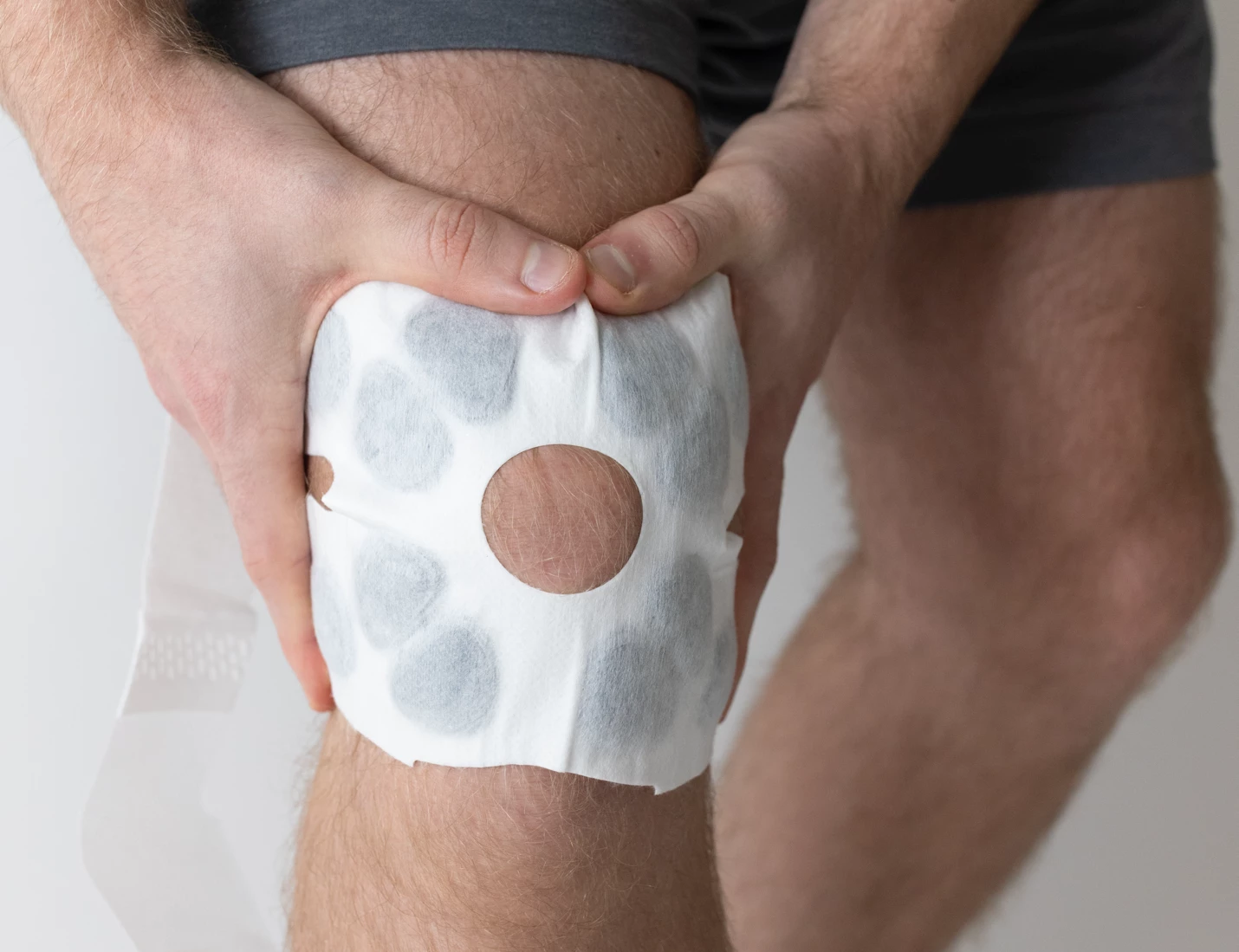
SAFETY INFORMATION
**Do not apply heat:
- To a new or early stage injury (avoid heat applications for the first 48-72 hours after injury)
- To skin that is hot, red, or inflamed or to an open wound
- If you have diabetes, skin irritation, a vascular disease, deep vein thrombosis, or multiple sclerosis (MS), or any sensory disorder that might prevent you from sensing if tissues are becoming overheated
- That is too hot, be careful you don’t burn or scald the skin
Consult your doctor or a physical therapist if you’re unsure whether heat therapy is appropriate for your individual circumstances.
*Do not use ice or cold or cryotherapy:
- Prior to exercise
- If you are experiencing cramping or increased muscle tension (cold could make this worse)
- If you have sensory disorders, diabetes, Raynaud’s syndrome, or poor circulation (because you may not be able to feel if tissues are becoming too cold)
- If your main concern is stiffness
- If you are already cold or if the area is already numb
- On an open wound or blistered skin
- Directly against the skin – place a cloth or towel between ice packs and the skin
- For more than 20 minutes at a time (apply cold treatments for 20 minutes maximum and then take at least a 20-minute break
This article is for informational purposes only. If you have new, acute knee pain or have suffered an injury, talk to your healthcare team and work with them to determine appropriate, individualized care for your specific circumstances.

Real heat that
moves with you
Find where to buy ThermaCare Knee Pain Therapy in stores near you and online to bring the heat home.
Shop Now
